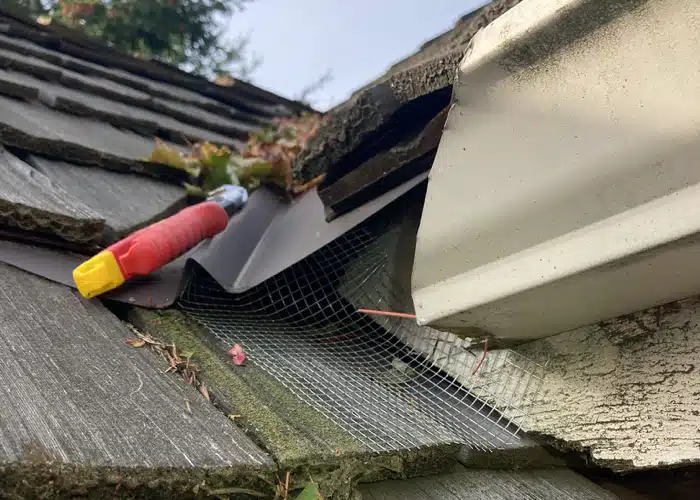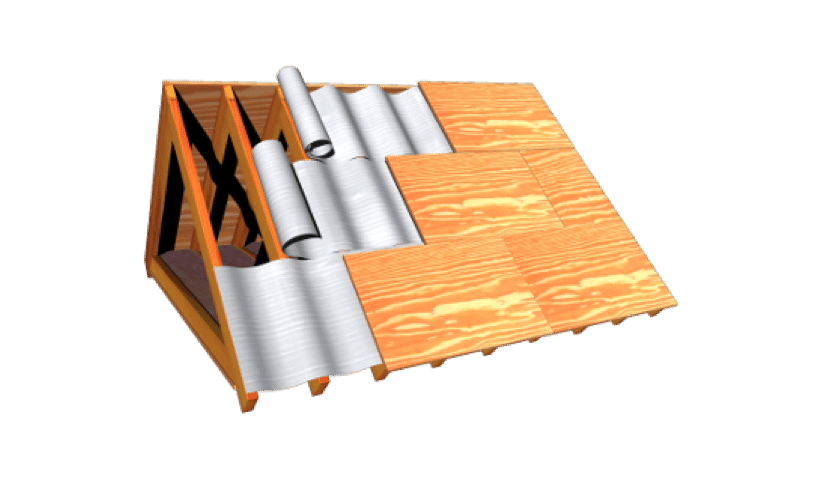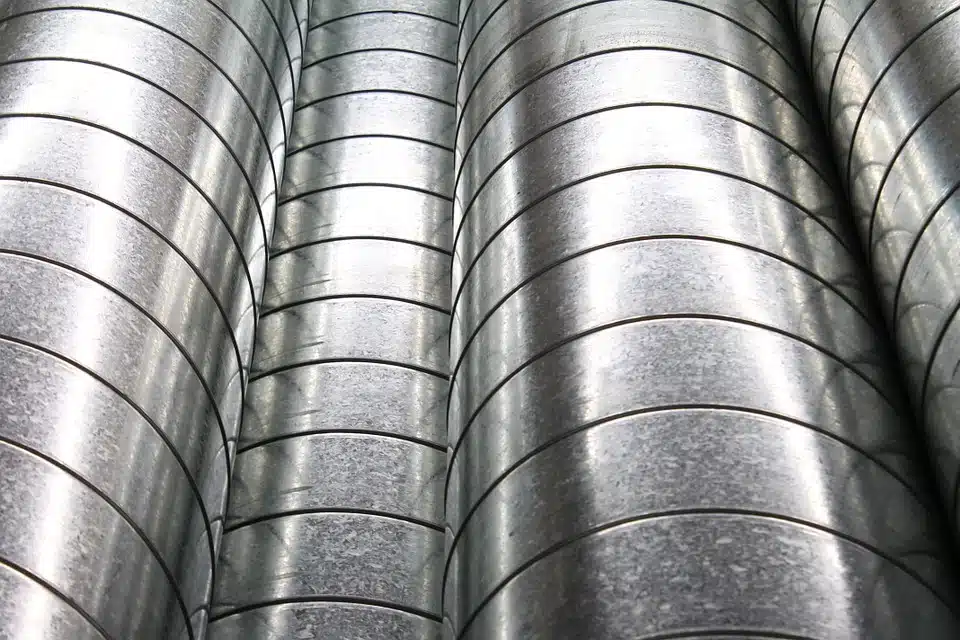
Home » Radiant Barrier Installation, Repair & Replacement
ALWAYS AVAILABLE
LICENSED ENVIRSI815KB
WARRANTY MAINTENANCE
What is a radiant barrier, how does it work, and do you need it for your home? Studies have shown that a radiant barrier (also known as reflective insulation) can help to save up to 180 kWh of energy per year. (Source)
When you’re searching for radiant barrier attic installation, repair, and replacement, look no further than the local professionals at Envirosmart Solution. Radiant barriers work by reducing radiant heat gain in your attic space, helping to maintain a more energy-efficient home.
Get Your Free Quote Fast
If you need a more detailed and technical explanation, feel free to contact our experts for a quick chat about attic insulation radiant barrier installation service.
So, what exactly is a radiant barrier?
A radiant barrier is a type of reflective insulation that serves as a highly reflective material aiming to obstruct heat radiation from energizing objects through UV rays and emitting their own heat.
Typically installed in homes during the hotter months, especially in the attic area, a radiant barrier aims to lessen heat absorption and lower cooling expenses as a supplementary measure to conventional attic insulation.
According to the Department of Energy, reflective insulation should have a high reflectance of at least 90% and 10% emittance or less.
How does the attic radiant barrier work?
Consider the process like this: Have you ever cooked with an iron skillet? The handle eventually gets hot. That’s because heat flows towards colder areas. In warm weather, if your home’s interior is 68 degrees and it’s 85 degrees outside, heat is attracted to the cooler temperature inside. The sun heats your roof and attic. The hot air travels from your attic into your comfortable home – and heats it up. Unless, of course, you have reflective insulation functioning in tandem with your attic radiant barrier installation service.

One notable advantage of reflective insulation over traditional insulation methods is its resilience to humidity. Reflective insulation tends to perform consistently regardless of how humid the seasonal climate may be.
There are different types of radiant barriers. The main component is a reflective material, typically foil insulation. The foil is on one or two sides of the base material (cardboard, paper, plastic film). Some products for radiant barrier attic installation services use reinforced fiber for more durability.
Your HVAC Expert
Here to help answer any questions you may have about our services.
Jonathan Anderson is recognized as an expert in energy efficiency, with specialized knowledge in HVAC systems and sustainable energy practices. His extensive background, fortified by a Mechanical Engineering degree from the University of Washington and professional certifications in energy auditing and HVAC technology, positions him as a leading authority in his field.
100% Customer Satisfaction Guaranteed
Your attic & crawl space project is a significant investment. Working with a team of seasoned ventilation repair technicians is crucial to ensure the success of the ventilation installation or repair.
If you live in the Puget Sound area, your top choice is Envirosmart Solution. Here are all the reasons why!
Book your service today and avoid costly problems down the road!

Reflective insulation consists of thin sheets of reflective materials. In the winter, it works to keep heat in your home by preventing heat loss through your roof. In the summer, it keeps the heat from entering your attic through the rooftop and making your home hot. By installing reflective insulation over your existing attic insulation, we enhance its energy efficiency. This not only helps trim down your utility bills but also ensures a more comfortable and consistently controlled temperature within your home.
Radiant barrier foil insulation works alongside existing insulation to enhance overall performance. It contributes to a cooler attic and a less hostile environment for your air ducts and other systems in the attic.
By leveraging the principle of heat flow from warm areas to cooler ones, attic radiant barrier installation service can prevent the unwanted transfer of heat from the warm interior of your home to the cold attic during the chilly winter months in the Puget Sound region.
This solution offers an easy and cost-effective method of reducing heating expenses by enhancing insulation efficiency. It consequently leads to a more consistent indoor temperature and a reduction in energy consumption.
The process of selecting the best radiant barrier attic insulation installation contractor is straightforward. Envirosmart Solution is a licensed radiant barrier company that offers comprehensive services, including the installation of attic radiant barrier insulation, and boasts excellent customer reviews.
Radiant barriers are indeed effective in creating a cooler attic space, which in turn helps to reduce cooling costs and enhance overall comfort. Proper radiant barrier attic installation services can lead to tangible reductions in energy expenses and contribute to cooler attics. These sheathing products are cost-effective as they involve minimal additional expenses.
A cooler attic means less heat transfer to the living spaces below. Notably, radiant barriers are more effective as outdoor temperatures rise.
It’s crucial to ensure that radiant barriers have an air space in front of them. When sandwiched between layers of insulation or siding, they can become conductors and counteract the insulation’s effectiveness. Additionally, reflective properties are fundamental for the effectiveness of radiant barriers. If you still have questions about the functionality of radiant barriers, please feel free to reach out to us for further clarification.
In general, radiant barrier attic installation or on your roof should not disrupt your cell phone signal.
Studies have demonstrated that radiant barriers have the potential to reduce cooling costs by 5% to 10%. They effectively work to retain warm air during winter and block up to 97% of solar radiation during the summer months.
Our team of insulation and radiant barrier foil experts in the Puget Sound area is reliable, punctual, and committed to delivering on our promises. We prioritize efficiency, ensuring that the job is completed promptly. Moreover, our staff is exceptionally courteous and professional, ensuring a positive experience for our customers and building trust in our services.
We are licensed, insured, and stay up-to-date on all local codes and standards, ensuring the best possible attic insulation for your home.
If you’ve been experiencing issues with poor attic ventilation and moisture problems, it’s possible that your old reflective insulation may be the culprit and require replacement. Improper installation can lead to excess moisture accumulation, which in turn can cause rot and mold, and pose risks to both the structural integrity of your home and the health of your family.
However, it’s important to note that sometimes the fault may not lie with the reflective insulation, also known as a radiant barrier. Alternatively, the root cause could be poor roof ventilation. In this case, our team can conduct an inspection of your house to pinpoint the source of the excess moisture issue and provide you with an appropriate solution.
To perform a quick check yourself and determine if the radiant barrier is correctly applied, consider the following guidelines:
By ensuring the proper installation of the radiant barrier attic and addressing any underlying ventilation or moisture concerns, you can mitigate the risks associated with attic-related issues and maintain a healthy and structurally sound home.
To ensure the effectiveness of attic radiant barrier installation, it’s crucial to have it installed correctly by experienced professionals, such as our team at Envirosmart Solution.
One significant aspect to consider is that radiant barrier material conducts electricity, highlighting the importance of taking precautions to avoid any risk of electrical shock. If you’re building a new home, call us during the construction process. We’re happy to do your roof rafters insulation installation. For existing homes, we never install a barrier over the top of the existing insulation on your attic floor because it can trap moisture, which is already a problem in our area.
The most effective installation method is connecting the radiant barrier to the underside of the roof. That way, heat reflects and doesn’t enter the attic. Your attic will stay cooler and have proper ventilation.
We understand how a radiant barrier works, and our team of experts will install radiant barrier for maximum effectiveness. Your radiant barrier foil project is a significant investment. We understand that making the best decision today is crucial to your long-term home comfort and safety.
Our team of skilled technicians specializing in attic and crawl space services boasts extensive experience in areas such as attic insulation, reflective insulation, ventilation, mold remediation, vapor barriers, water drainage systems, and various other repair and installation services for both residential and commercial clients. By delivering top-notch thermal insulation and promoting energy efficiency, particularly in hot climates, we strive to enhance the comfort and sustainability of your living or working space.

Dealing with uninvited furry guests in your attic can be a daunting task. Mice are notorious for causing damage to insulation, electrical wires, and other

If you’re struggling with mold in your home, it can be hard to know where to start. Mold is one of the most common household
SERVICES
INFORMATIONS
CONTACT
Envirosmart Solution, 2024 © All Rights Reserved